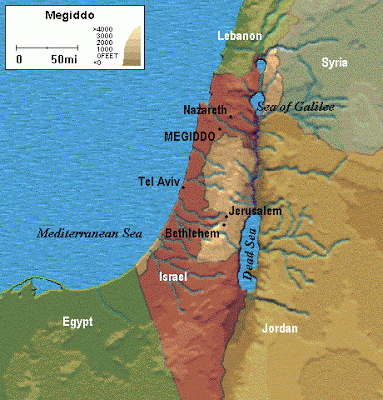Megiddo (Hebrew: מגידו; Arabic: المجیدو, Tell al-Mutesellim) is a tell or
hill in northern Israel about 30km south-east of Haifa. Megiddo is better
known for its Greek name Armageddon. Megiddo is strategically located at the
head of a pass through the Carmel Ridge overlooking the Jezreel Valley from
the west. The pass is an important trade route connecting Egypt and northern
regions of Syria, Assyria and Mesopotamia (sorry for the mixing the
different time periods). Because of this it had been repeated destroyed and
rebuilt. Excavations have revealed about 26 layers of ruins! It was probably
inhabited from approximately 7000 BC to 586 BC (the same time as the
destruction of the First Israelite Temple in Jerusalem by the Babylonians,
and subsequent fall of Israelite rule and exile). Since this time it has
remained uninhabited.
 |
| Tel Megiddo-
aerial view form the southeast (source BiblePlaces.com) |
Megiddo is mentioned twelve times in the Old Testament, ten times in
reference to the ancient city of Megiddo, and twice with reference
to "the plain of Megiddo", most probably simply meaning "the plain
next to the city." The
Bible lists the king of Megiddo among the Canaanite rulers defeated
by Joshua in his conquest of the land (Joshua 12:7, 12:21).
The city of Megiddo was allotted to the tribe of Manasseh (Joshua
17:11; 1 Chronicles 7:29).
Deborah and Barak led the Israelites to victory over the Canaanite
armies of Sisera by "the waters of Megiddo" (Judges 5:19-20).
Solomon made Megiddo one of his district capitals as well as one of
his three main fortress cities (I Kings 4:12; 9:15).
According to I Kings (9:15), King Solomon built Megiddo together
with Hazor and Gezer. At that time the city had become the center of
a royal province of the United Monarchy.
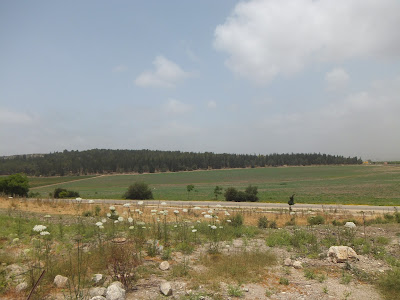 |
| view of Jazreel
Valley |
There were many famous battles fought there. In 906 BCE, a battle was
fought here between Egypt and the Kingdom of Judah. King Josiah of Judah
died in battle near Megiddo when he tried to sabotage Pharaoh Necho's
attempt to succor the Assyrians at the Battle of Carchemish (2 Kings
23:29-30; 2 Chronicles 35:20-24).
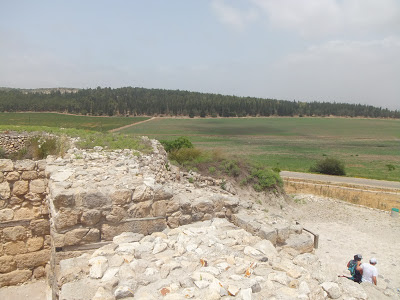 |
| strategic view of
Jezreel Valley |
The word "Armageddon" appears only once in the Greek New Testament, in
Revelation 16:16.
REV 16:16 Then
they gathered the kings together to the place that in Hebrew is called
Armageddon.
The word may come from Hebrew har məgiddô (הר מגידו), meaning "Mountain
of Megiddo". "Mount" Megiddo is not actually a mountain, but a mount (a
hill created by many generations of people living and rebuilding on the
same spot). According to one premillennial Christian interpretation, the
Messiah will return to earth and defeat the Antichrist (the "beast") and
Satan the Devil in the Battle of Armageddon. Then Satan will be put into
the "bottomless pit" or abyss for 1,000 years, known as the Millennium.
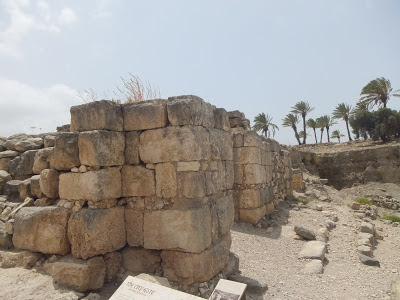 |
| thick walls and
gateway |
This may be the Solomonic gateway. King Solomon built many fortified
cities in ancient Israel. Some are for chariots while others are for storage
of grains. Initially, most scholars think that Tel Megiddo is a chariot city
because of its stables. However the discovery of grain storage facilities
are forcing them to rethink their classification.
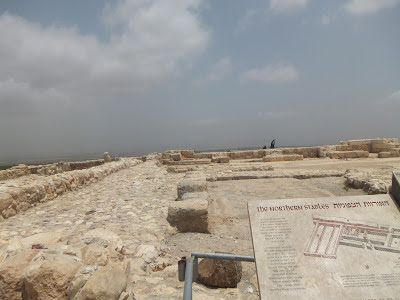 |
| northern stables,
probably built around the time of King Ahad |
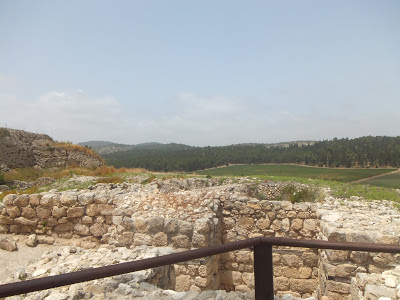 |
| note the thick
walls |
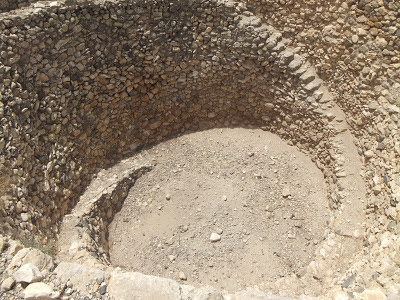 |
| storage silos for
grains, probably built by King Jeroboam II (8th C BC). There are
stairs that lead to the bottom of the site |
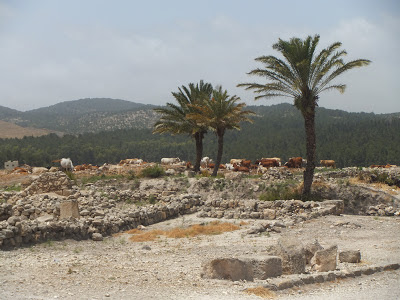 |
| near the southern
Megiddo Stables. There are cattle grazing in the background |









